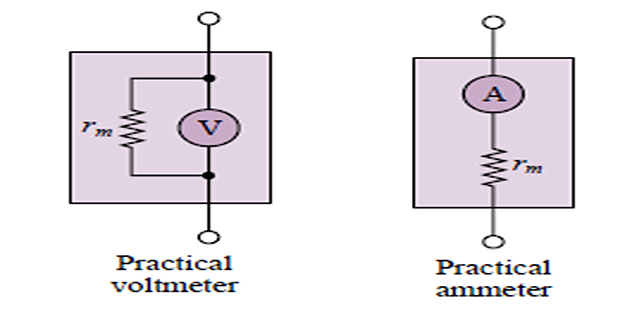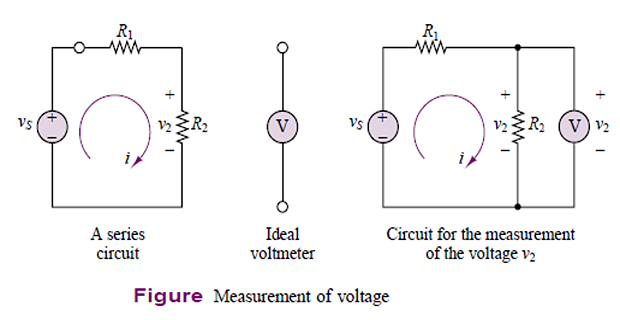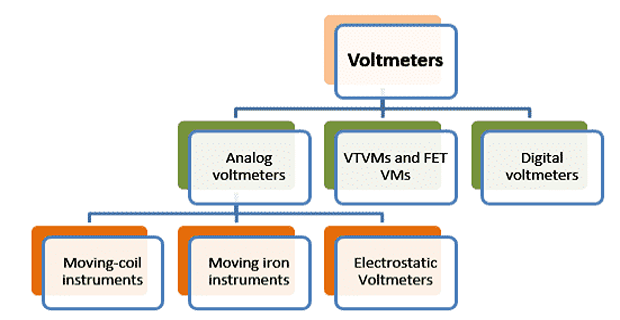Voltmeters for Precise Voltage Measurement
Demonstrative Video
Voltmeters
Device that can measure the voltage across a circuit element.
Since voltage is the difference in potential between two points in a circuit, the voltmeter needs to be connected across the element whose voltage we wish to measure.
A voltmeter must also fulfill two requirements:
The voltmeter must be placed in parallel with the element whose voltage it is measuring
The voltmeter should draw no current away from the element whose voltage it is measuring, or else it will not be measuring the true voltage across that element. Thus, an ideal voltmeter has infinite internal resistance.
A practical ammeter will contribute some series resistance to the circuit in which it is measuring current.
A practical voltmeter will not act as an ideal open circuit but will always draw some current from the measured circuit.
Circuit Connection of Voltmeter


Classification or Types of Voltmeter

Analog Voltmeter
It includes deflecting type of indicating voltage meters
VTVMs and FET VMs
instruments handle both AC/ DC voltages and resistance measurements.
Digital Voltmeter (DVM)
DVM displays the voltage using LEDs or LCDs to display the result.

Based on construction
Parmanent Magnet Moving coil (PMMC)
Moving Iron (MI)
Electro Dynamometer type
Rectifier type
Induction type
Electrostatic type
Digital Voltmeter (DVM).
Depending on the types of measurement
DC Voltmeter.
AC Voltmeter.
Applications
PMMC \(\rightarrow\) DC measurement
MI \(\rightarrow\) both AC and DC
Electro-dynamometer \(\rightarrow\) both AC and DC
Induction \(\rightarrow\) not used because of high cost, inaccuracy
Rectifier, electrostatic, and DVM \(\rightarrow\) both AC and DC